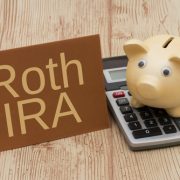Understanding the Self-Directed Solo 401(k)
When most people think about retirement, they think about the 401(k) plan. But for many people, that simply refers to a 401(k) plan they might have through an employer. What if you want more freedom? What if your personal situation calls for a more independent retirement arrangement? Then it might be time for you to think about the Self-Directed Solo 401(k).
Here at American IRA, we have a section about the Self-Directed Solo 401(k) for you to review. But to help put it in layman’s terms, we thought we would introduce it here and break it down bit-by-bit for anyone who might be exploring potential avenues for retirement investing.
Understanding the Self-Directed Solo 401(k): The Basics
Let us start with the basics and define what a Self-Directed Solo 401(k) is and how it might work.
- Definition: The Self-Directed Solo 401(k) plan is an IRS-approved retirement plan. It is designed for people who are self-employed, such as sole proprietors, corporations, or LLCs.
- Benefits: Perhaps the most obvious benefit is that the Self-Employed Solo 401(k) participant can make contributions both as employer and employee. This can result in very high contribution limits that make it a beneficial account for individual investors to use, especially if they have larger amounts of money every year that could otherwise be shifted towards retirement.
There is more to understand about the Self-Directed Solo 401(k), but those are two of the most important factors to consider. The Self-Directed Solo 401(k) is a plan that entrepreneurs can use for themselves in certain circumstances—and when they do, it can be a powerful factor in their retirement.
Why Consider the Self-Directed Solo 401(k)?
Even if you went through the points above, you might still find yourself wondering why this account might make sense for your specific situation. And the truth is, different retirement accounts may be better for different people. It will be up to you to decide what works for you. However, there is plenty to discover about the Self-Directed Solo 401(k) and why it might work for you:
- Contribution limits. For many investors—particularly those beginning their retirement journey a little later in life—it is important to have high contribution limits to put towards retirement. In 2019, annual contribution limits were up to $56,000 depending on your situation, with an additional $6,000 in catch-up contribution limits for people over the age of 50.
- Borrowing from the 401(k). Borrowing up to $50,000 or 50% of the account value (whichever is less) means that investors can have added flexibility with this retirement account.
- Different investment options. When using a Self-Directed Solo 401(k), there are plenty of different investment options that investors will have to choose from. This means that investors can even include real estate, for example, within a Self-Directed Solo 401(k).
What about eligibility for a Self-Directed Solo 401(k)? This is something that you will have to think about. For example, you have to have Self-Employment activity and an absence of full-time employees to make a Solo 401(k) work. After all, this is a Solo plan, which means that if you have a company with many employees, you will have to create a different plan.
Is everyone right for the Self-Directed Solo 401(k)? It is tempting to believe so when you hear how powerful it can be for setting aside money toward retirement. But the truth is, a Self-Directed IRA has to match with your specific situation, and you have to qualify based on your working and income status.
Interested in learning more about Self-Directed IRAs? Contact American IRA, LLC at 866-7500-IRA (472) for a free consultation. Download our free guides or visit us online at www.AmericanIRA.com.









